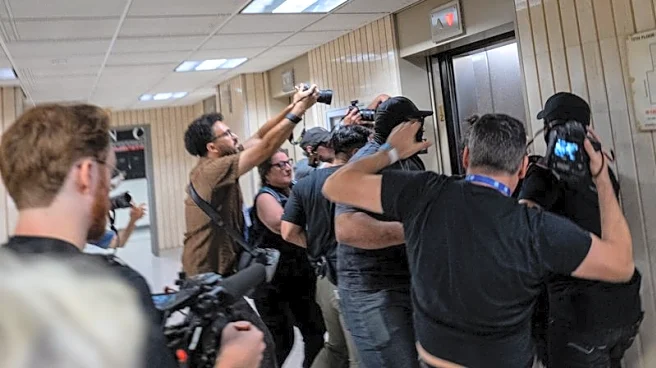What's Happening?
Recent high-profile shootings have revealed a trend where gunmen inscribe messages on bullet casings and firearms, providing investigators with potential insights into their motives. This practice, reminiscent of ancient warfare tactics, has been observed in several incidents, including the fatal ambush of UnitedHealthCare CEO Brian Thompson, the attack on a Minneapolis Catholic school, and the shootings of conservative activist Charlie Kirk and individuals at a Dallas immigration facility. Experts suggest that these inscriptions, often depicting cultural and political ideologies, serve as a performative act by extremists to control the narrative of their actions, even if they are not present to witness the aftermath. The messages can be categorized into personalization for the owner, the opponent, or for someone else to find, offering a starting point for investigators to understand the intentions behind the attacks.
Why It's Important?
The inscriptions on bullet casings and firearms are significant as they provide law enforcement with clues that can help piece together the motives behind violent acts. This trend highlights the intersection of psychological warfare and modern extremism, where perpetrators use these messages to gain notoriety and influence through social media. The practice underscores the evolving nature of radicalization, where individuals seek significance and control over their lives, often inspired by previous attackers who have achieved notoriety. Understanding these motives is crucial for preventing future attacks and addressing the underlying issues of extremism and radicalization in society.
What's Next?
Investigators are likely to continue analyzing these messages as part of their efforts to understand and prevent future attacks. The release of details from crime scenes, such as the content of manifestos or inscriptions on ammunition, may be used strategically to trigger leads or identify potential suspects. As the U.S. grapples with political and social tensions, law enforcement and policymakers may need to address the root causes of extremism and the role of social media in spreading radical ideologies. This could involve increased monitoring of online platforms and collaboration with tech companies to curb the spread of extremist content.
Beyond the Headlines
The practice of inscribing messages on ammunition raises ethical and cultural questions about the glorification of violence and the impact of social media on radicalization. It reflects a deeper societal issue where individuals feel marginalized and seek significance through extreme actions. Addressing these concerns requires a multifaceted approach, including education, community engagement, and mental health support to prevent individuals from turning to violence as a means of expression.











